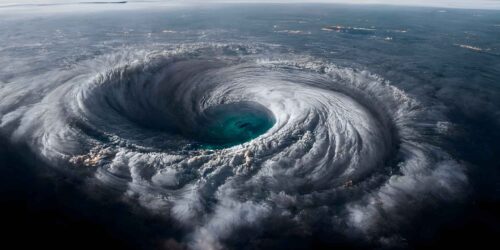
With less than 100 days until the start of the 2025 Atlantic hurricane season, the time to prepare is now. The season, which begins on June 1 and runs through November 30, brings with it the possibility of storms that can be destructive and deadly. While every hurricane season comes with its share of uncertainties, experts have already begun to analyze the conditions that could influence this year’s activity. One key aspect to monitor is the strength and category of hurricanes that may form.
The strength of a hurricane is classified into five categories, with Category 1 being the least severe and Category 5 being the most catastrophic. As the countdown to the season continues, it’s important to recognize the categories that can have the most devastating impact, as these are the storms that typically cause the most damage and require the most intense preparations. Here are three of the most concerning categories to watch for in the upcoming hurricane season.
**1. Category 3: Major Hurricanes**
Category 3 hurricanes are considered major storms, capable of causing widespread damage. These storms feature sustained winds ranging from 111 to 129 mph (179 to 208 km/h), which can result in devastating effects on homes, infrastructure, and entire communities. Storm surge from a Category 3 can flood coastal areas, and its strong winds can easily tear off roofs, uproot trees, and cause widespread power outages.
The danger with Category 3 hurricanes lies in their ability to cause destruction over a wide area. While they may not reach the catastrophic winds of a Category 4 or 5, their intensity still makes them capable of catastrophic flooding, extensive property damage, and long-lasting impacts on local economies. These storms also present significant risks to human life, particularly for those who live in low-lying coastal areas or areas without sufficient storm preparedness.
During the 2025 season, if forecasts predict a shift toward El Niño, which could weaken hurricanes, the chances of major storms like Category 3s may increase. Coastal and inland communities must stay vigilant and well-prepared for the possibility of these intense storms.
**2. Category 4: Devastating and Catastrophic Storms**
Category 4 hurricanes are even more destructive, with sustained winds ranging from 130 to 156 mph (209 to 251 km/h). These storms have the potential to cause catastrophic damage, especially in coastal areas. The wind speed alone can completely devastate homes, tearing off roofs and destroying entire buildings. Storm surges are typically extremely dangerous, with some areas seeing surge levels that can completely submerge homes and infrastructure.
A Category 4 storm can cause long-term power outages, making recovery difficult for affected communities. The combination of powerful winds and massive storm surges means that even structures built to withstand hurricanes may be severely damaged or destroyed. As these storms approach, there is often a need for mandatory evacuations in the most vulnerable areas, as staying behind can result in life-threatening situations.
The impact of a Category 4 hurricane is not limited to wind and storm surge alone—intense rainfall can lead to dangerous flash floods, even in areas far inland from the coast. Given the likelihood of above-average hurricane activity for the 2025 season, this category is a particularly important one for residents in high-risk areas to monitor closely.
**3. Category 5: The Worst-Case Scenario**
Category 5 hurricanes are the most extreme and dangerous storms, with sustained winds exceeding 157 mph (252 km/h). These storms are catastrophic in nature, and their damage is almost incalculable. The wind speeds alone can level entire communities, and the storm surge can push seawater miles inland, inundating vast areas with life-threatening floods.
When a Category 5 hurricane makes landfall, the devastation is nearly total. Entire cities can be wiped out, as seen in the aftermath of Hurricane Katrina (2005) and Hurricane Michael (2018), which were both Category 5 storms at their peak intensity. These hurricanes require the highest levels of preparedness, and evacuation orders are mandatory for all residents in affected areas.
Category 5 storms are relatively rare, but when they occur, they bring catastrophic consequences. In the 2025 season, if the atmospheric conditions favor the intensification of storms, the risk of a Category 5 cannot be ruled out. For residents of coastal areas, especially in the Gulf Coast, Southeast U.S., and Caribbean, it is essential to remain prepared and stay updated on the latest forecasts. These storms can strike quickly, and timely evacuations and safety measures can save lives.
**Conclusion: Be Ready for Anything**
As the 2025 Atlantic hurricane season approaches, understanding the categories of storms and the level of preparation required for each is vital. While it’s difficult to predict exactly which storms will form and where they will strike, having a plan in place for any eventuality is crucial. Whether it’s a Category 3, 4, or 5 storm, residents of hurricane-prone areas must be prepared for the worst and stay informed about any developments as the season unfolds. With careful planning and quick action, communities can mitigate the risks posed by these powerful and unpredictable natural disasters.

Be the first to comment